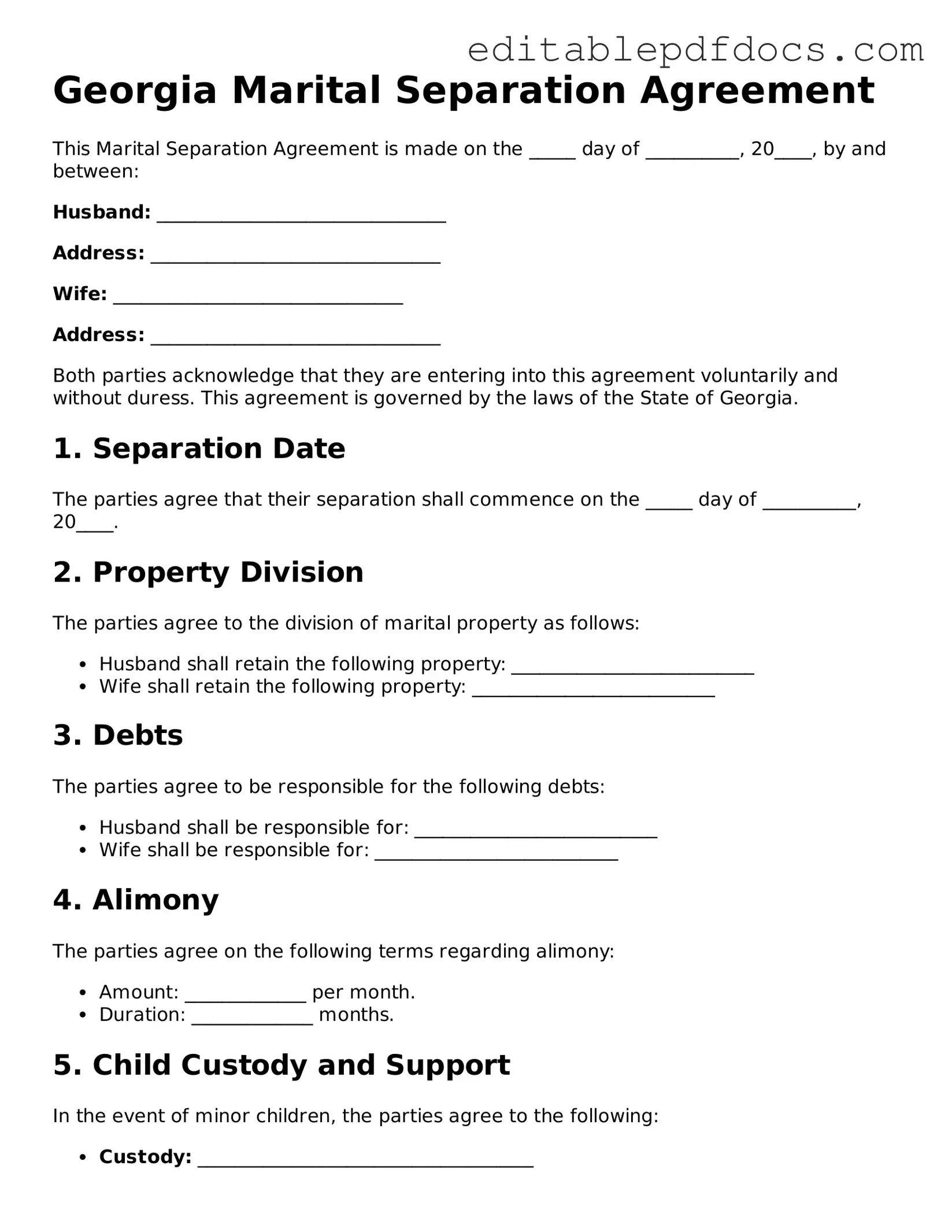Filling out the Georgia Marital Separation Agreement form can be a complex process. Many individuals make mistakes that can lead to confusion or even legal issues down the road. One common error is failing to provide complete and accurate information. This includes neglecting to list all assets and debts, which can create problems during the separation process.
Another mistake is not clearly defining the terms of child custody and support. If parents do not specify these details, it can lead to misunderstandings and disputes later on. Clarity is essential to ensure that both parties understand their responsibilities and rights regarding their children.
People often overlook the importance of including a detailed division of property. A vague description can lead to disagreements about who gets what. It is crucial to be specific about each item and its value to avoid complications in the future.
Additionally, many individuals fail to consider tax implications. For instance, the division of assets can affect tax liabilities. Ignoring these factors can result in unexpected financial burdens after the separation.
Another frequent error is not having the agreement reviewed by a legal professional. While it may seem like a straightforward process, legal language can be tricky. A lawyer can help identify potential issues and ensure that the agreement is enforceable.
People also sometimes forget to sign and date the agreement properly. An unsigned document can be deemed invalid, leading to complications in the enforcement of its terms. It is vital to ensure that all necessary signatures are in place.
Furthermore, some individuals make the mistake of not keeping copies of the agreement. Having a record is essential for both parties to refer back to the terms agreed upon. Without copies, misunderstandings may arise.
Finally, failing to update the agreement after significant life changes is a common oversight. Changes such as a new job, relocation, or changes in custody arrangements may necessitate a revision of the agreement. Keeping the document current is important for reflecting the parties' current circumstances.
